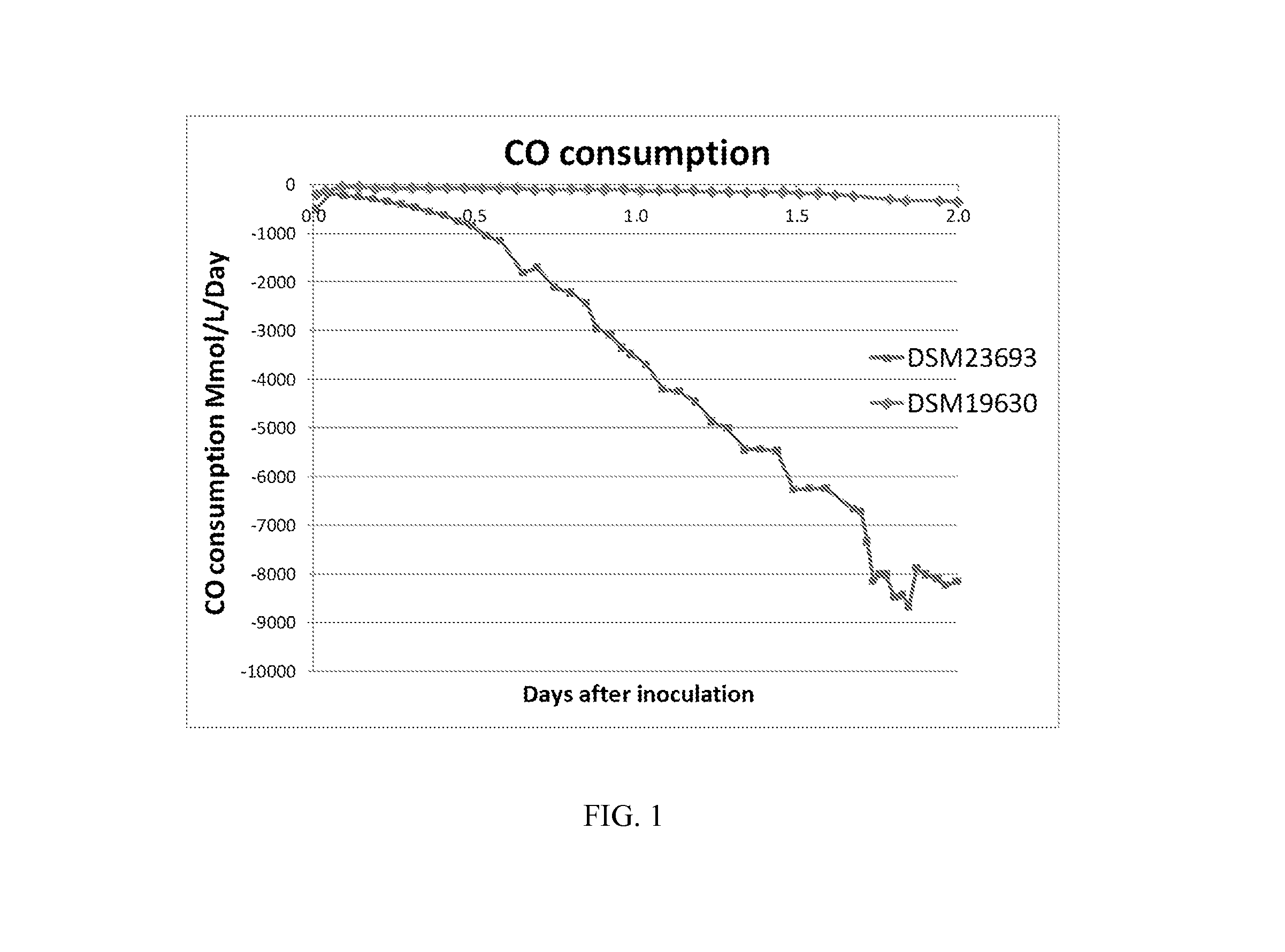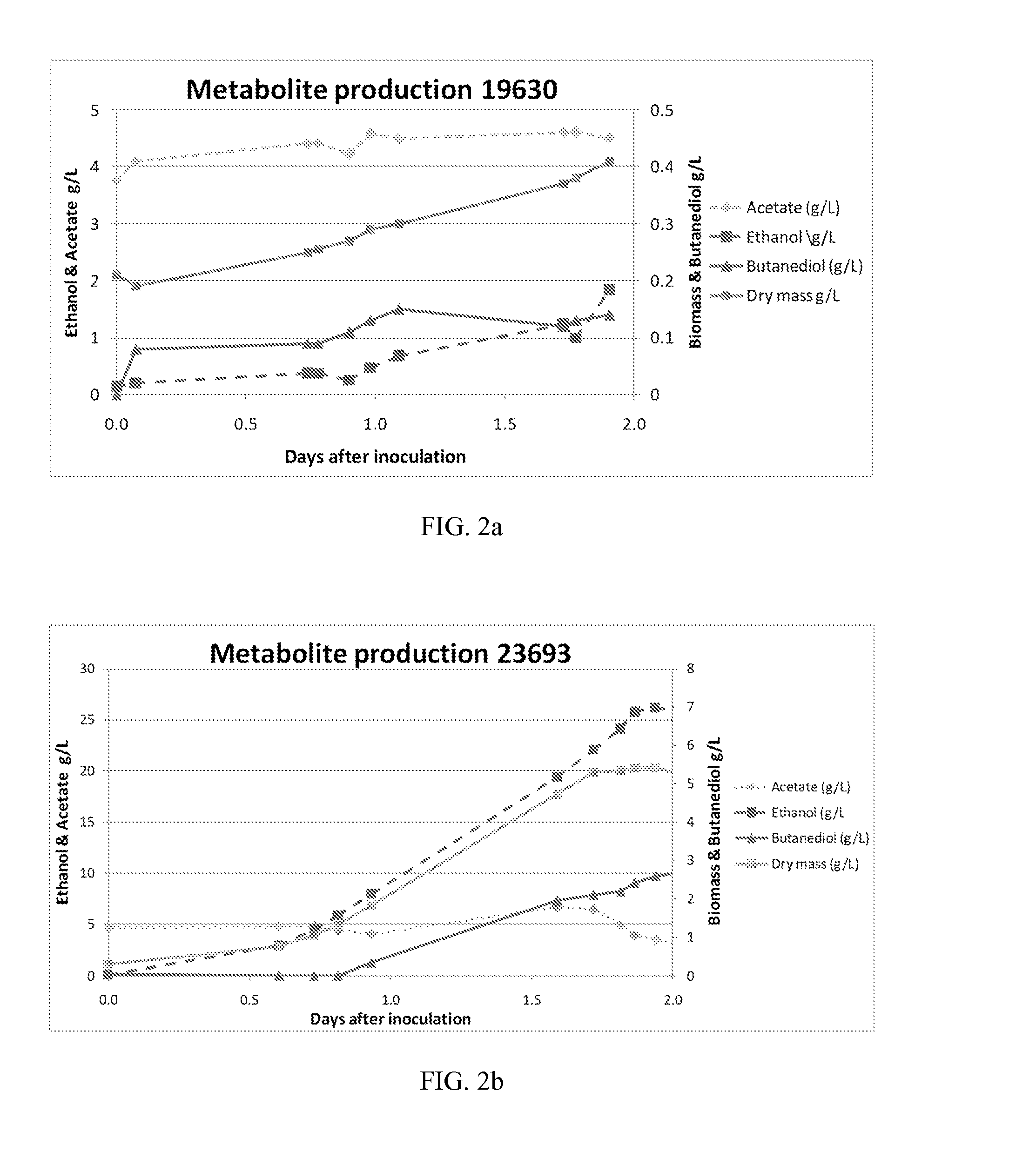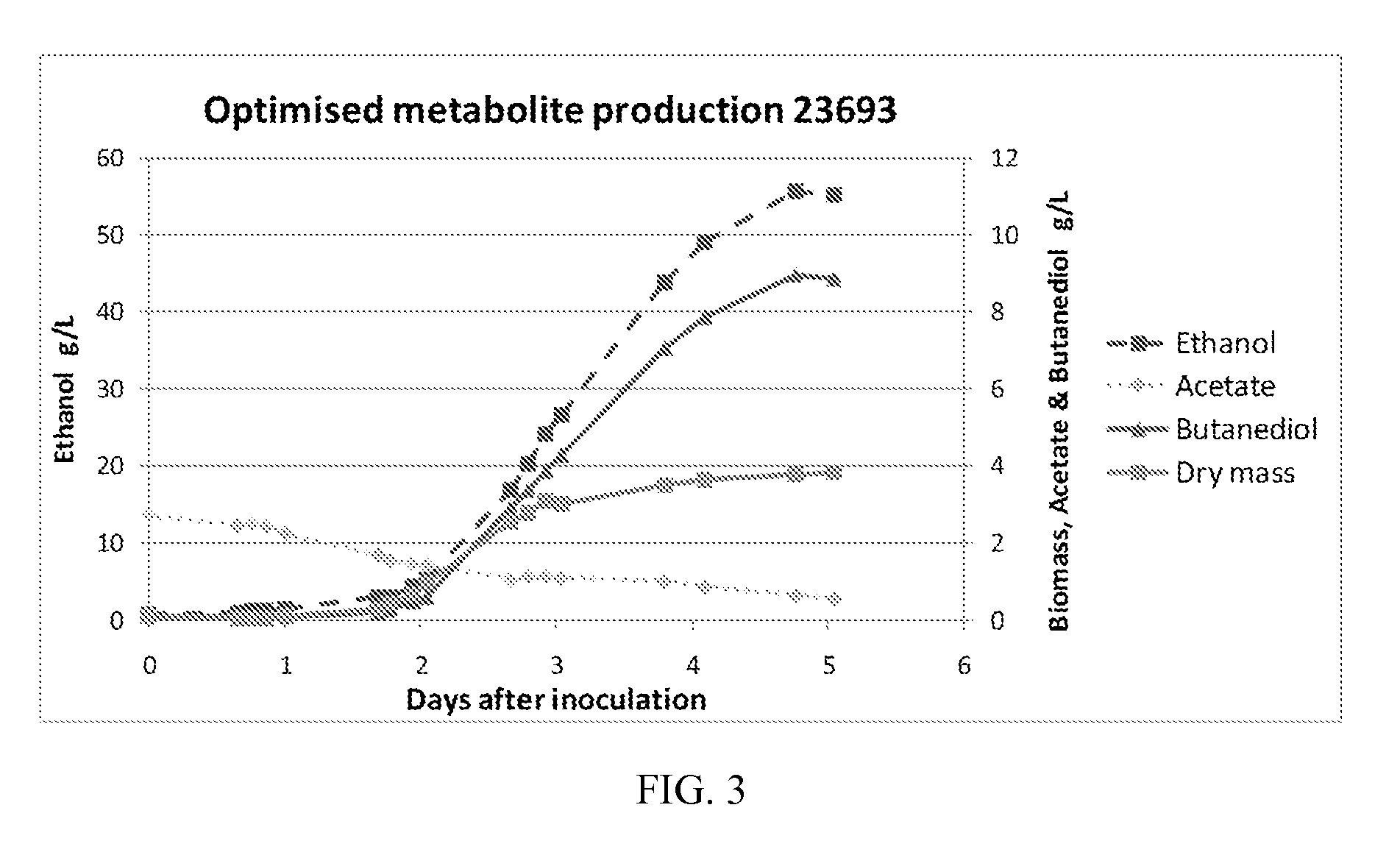Novel bacteria and methods of use thereof
a technology of bacteria and gas, applied in the direction of microorganisms, biochemical equipment and processes, biofuels, etc., can solve the problems of affecting the cost of these carbohydrate feed stocks, the economic sustainability of starch or sucrose-producing crops for ethanol production in all geographies, and the efficiency of ethanol production using such fermentation processes may be less than desirabl
- Summary
- Abstract
- Description
- Claims
- Application Information
AI Technical Summary
Problems solved by technology
Method used
Image
Examples
example 1
A: Batch Fermentation in CSTR
[0167]Approximately 1500 mL of solution A was transferred into a 1.5 L fermenter and sparged with nitrogen. Resazurin (1.5 mL of a 2 g / L solution) and H3PO4 (85% solution, 2.25 mL) was added and the pH adjusted to 5.3 using concentrated NH4OH(aq). Nitrilotriacetic acid (0.3 ml of a 0.15M solution) was added prior to 1.5 ml of solution C. This was followed by NiCl2 (0.75 ml of 0.1M solution) and Na2WO3 (1.5 mL of a 0.01M solution). 15 ml of solution B was added and the solution sparged with N2 before switching to CO containing gas (50% CO; 28% N2, 2% H2, 20% CO2) at 70 mL / min. The fermenter was then inoculated with 200 ml of a Clostridium autoethanogenum 19630 culture. The fermenter was maintained at 37° C. and stirred at 300 rpm. During this experiment, Na2S solution (0.2M solution) was added at a rate of approx 0.3 ml / hour. Substrate supply was increased in response to the requirements of the microbial culture.
[0168]The bacterial culture did not prolife...
example 2
[0172]Approximately 1500 mL of solution A was transferred into a 1.5 L fermenter and sparged with nitrogen. Resazurin (1.5 mL of a 2 g / L solution) and H3PO4 (85% solution, 0.56 mL) was added and the pH adjusted to 5.3 using concentrated NH4OH(aq). Solution C (1.5 mL) was added after which Na2WO3 (1.5 mL of a 0.01M solution) was added. 15 ml of Solution B was added and the solution sparged with N2 before switching to CO containing gas (50% CO; 50% N2) at 60 mL / min. The fermenter was then inoculated with 100 ml of a Clostridium autoethanogenum 23693 culture. The fermenter was maintained at 37° C. and stirred at 300 rpm. During this experiment, Na2S solution (0.5M solution) was added at a rate of approx 0.15 ml / hour. Substrate supply was increased in response to the requirements of the microbial culture.
[0173]The bacterial culture proliferated in the experimental conditions used. The fermentation conditions were identical or at least highly similar to the conditions used in Example 1A+...
PUM
 Login to View More
Login to View More Abstract
Description
Claims
Application Information
 Login to View More
Login to View More - R&D
- Intellectual Property
- Life Sciences
- Materials
- Tech Scout
- Unparalleled Data Quality
- Higher Quality Content
- 60% Fewer Hallucinations
Browse by: Latest US Patents, China's latest patents, Technical Efficacy Thesaurus, Application Domain, Technology Topic, Popular Technical Reports.
© 2025 PatSnap. All rights reserved.Legal|Privacy policy|Modern Slavery Act Transparency Statement|Sitemap|About US| Contact US: help@patsnap.com



